Abstract
When 168 fresh clinical isolates of Staphylococcus aureus were examined for their reactions on a medium containing 1 part in 100,000 crystal violet 50.6% of strains produced a purple appearance, 39.3% produced a white appearance and 10.1% produced a yellow appearance. Purple-reacting isolates were significantly associated with both invasive infections (P less than 0.01) and hospital origin (P less than 0.001). There were no significant associations between the crystal violet reactions and either animal contact or other properties previously reported to be characteristic of white and yellow-reacting strains (beta haemolysin and bovine coagulase production). The results of phage typing showed associations between susceptibility to group III phages and purple-reacting strains and between phage group II susceptibility and white and yellow-reacting strains. There was also a highly significant association between white reactions on crystal violet agar and susceptibility to lysis by a combination of all three groups (that is, I + II + III) and white-reacting strains were significantly more susceptible to lysis by phages 94 and/or 96, whether as a restricted pattern or as part of a broader pattern. The purple reaction on crystal violet medium may be a reliable marker of the 'hospital staphylococcus'.
Full text
PDF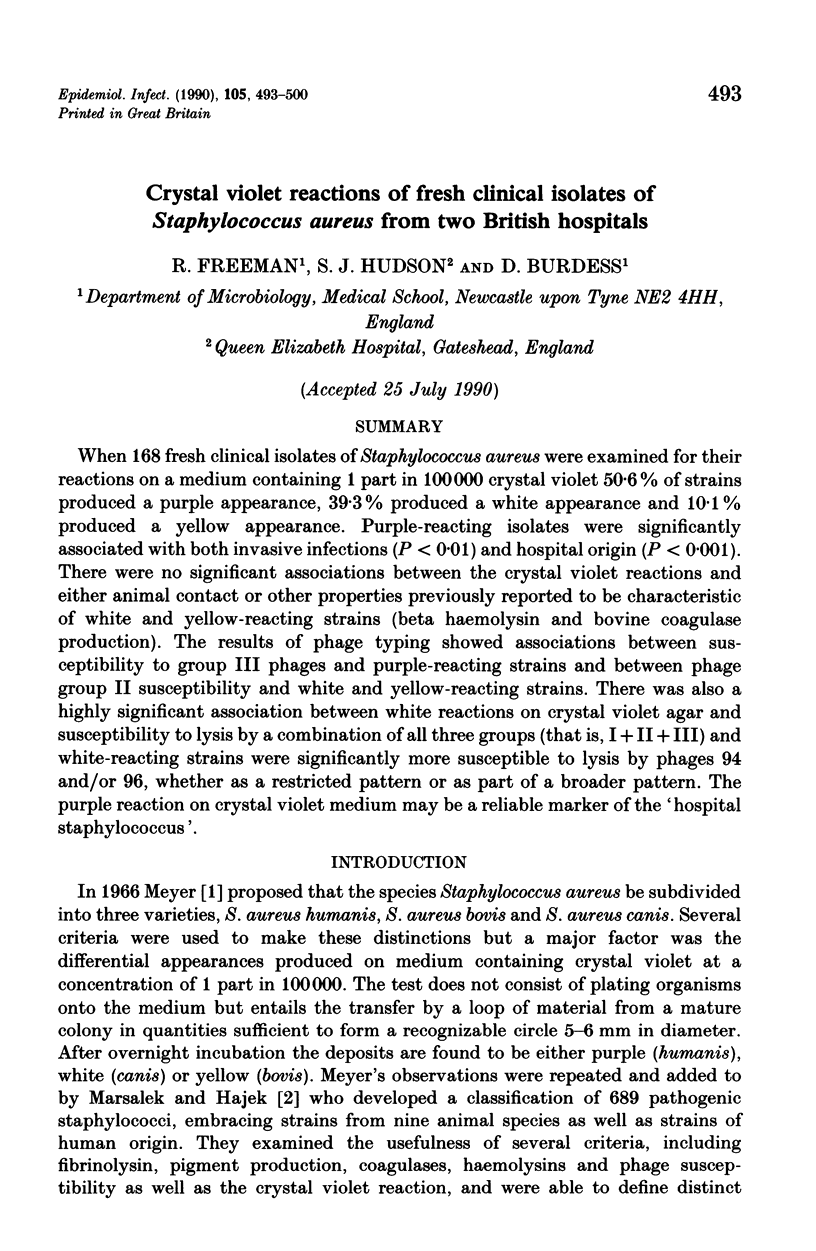

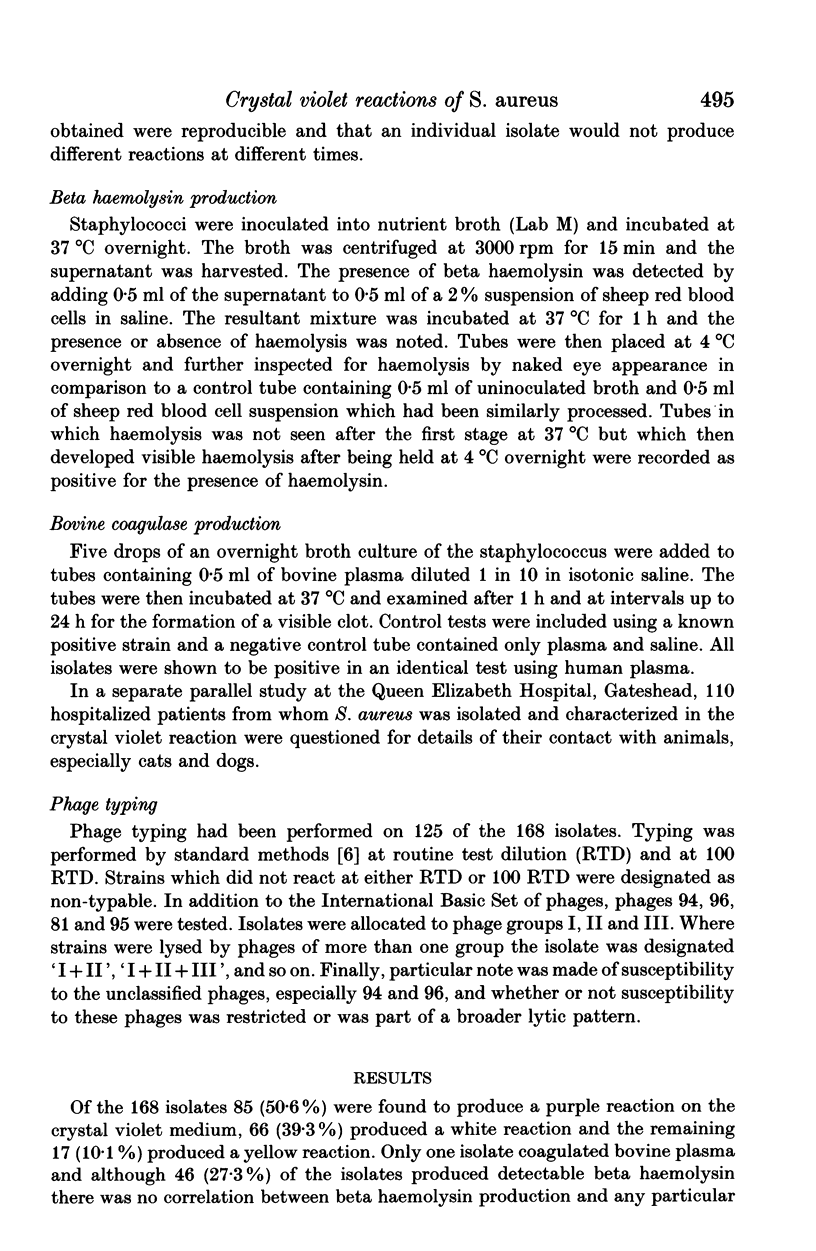

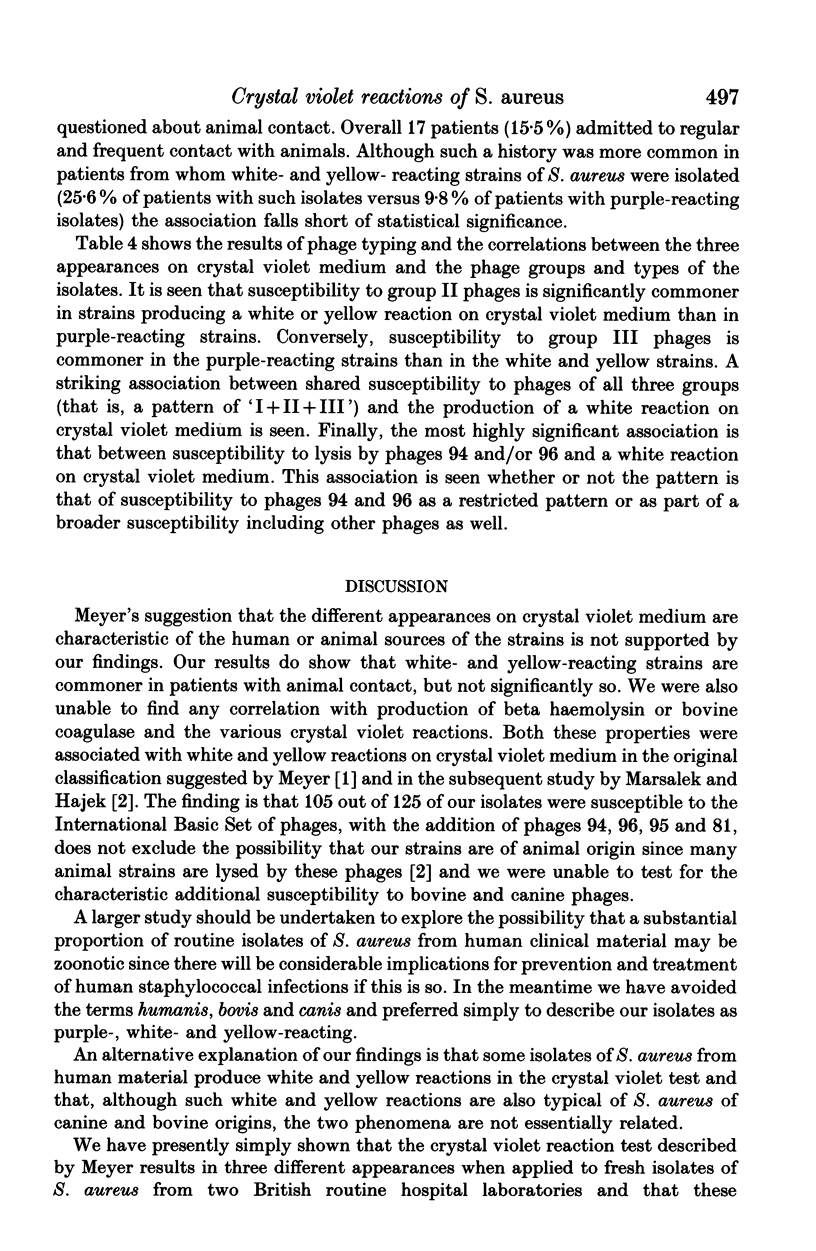
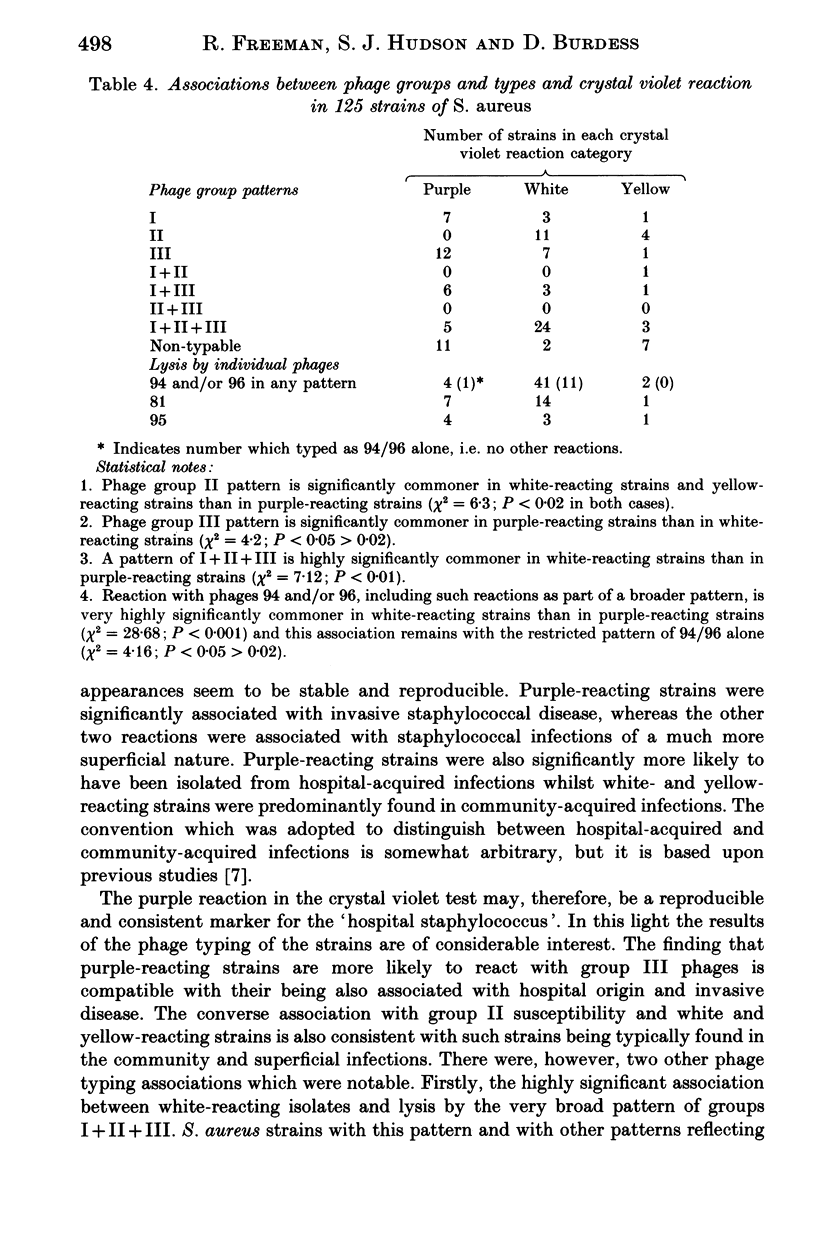
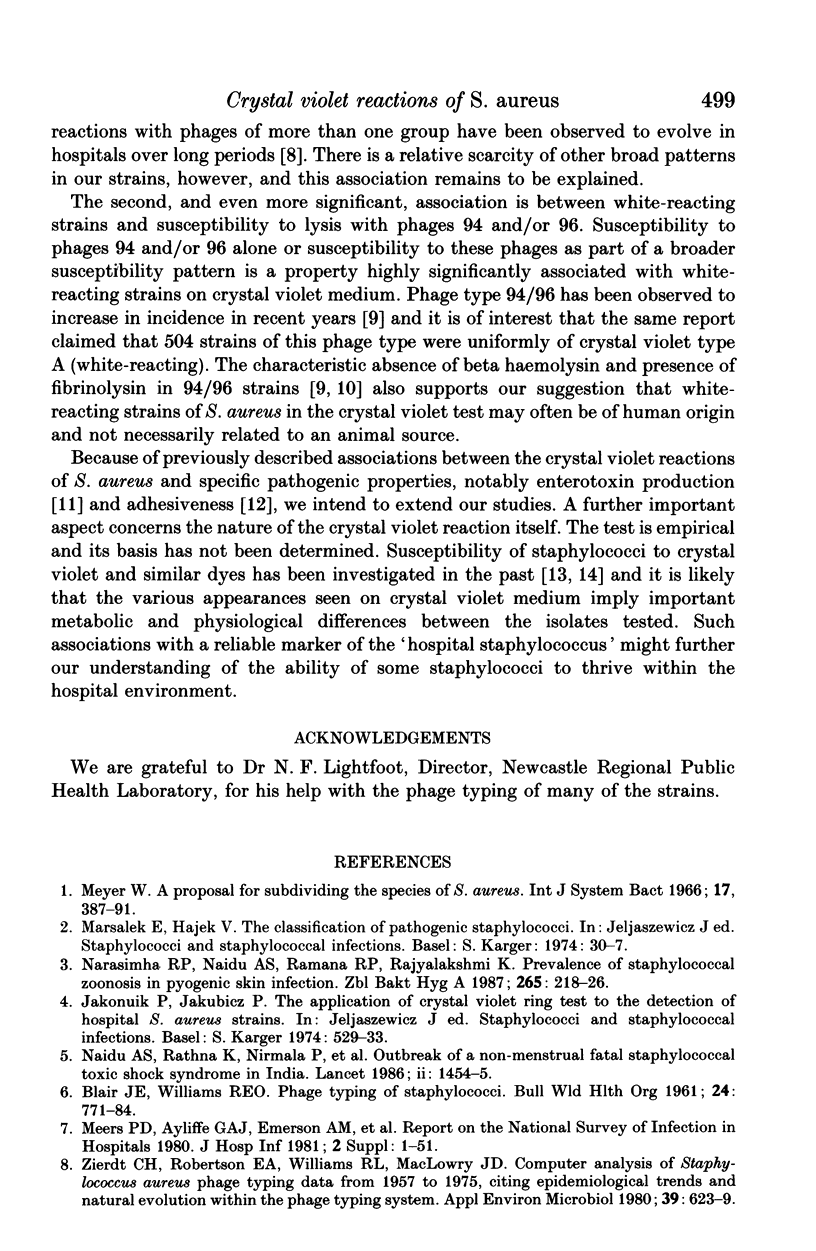
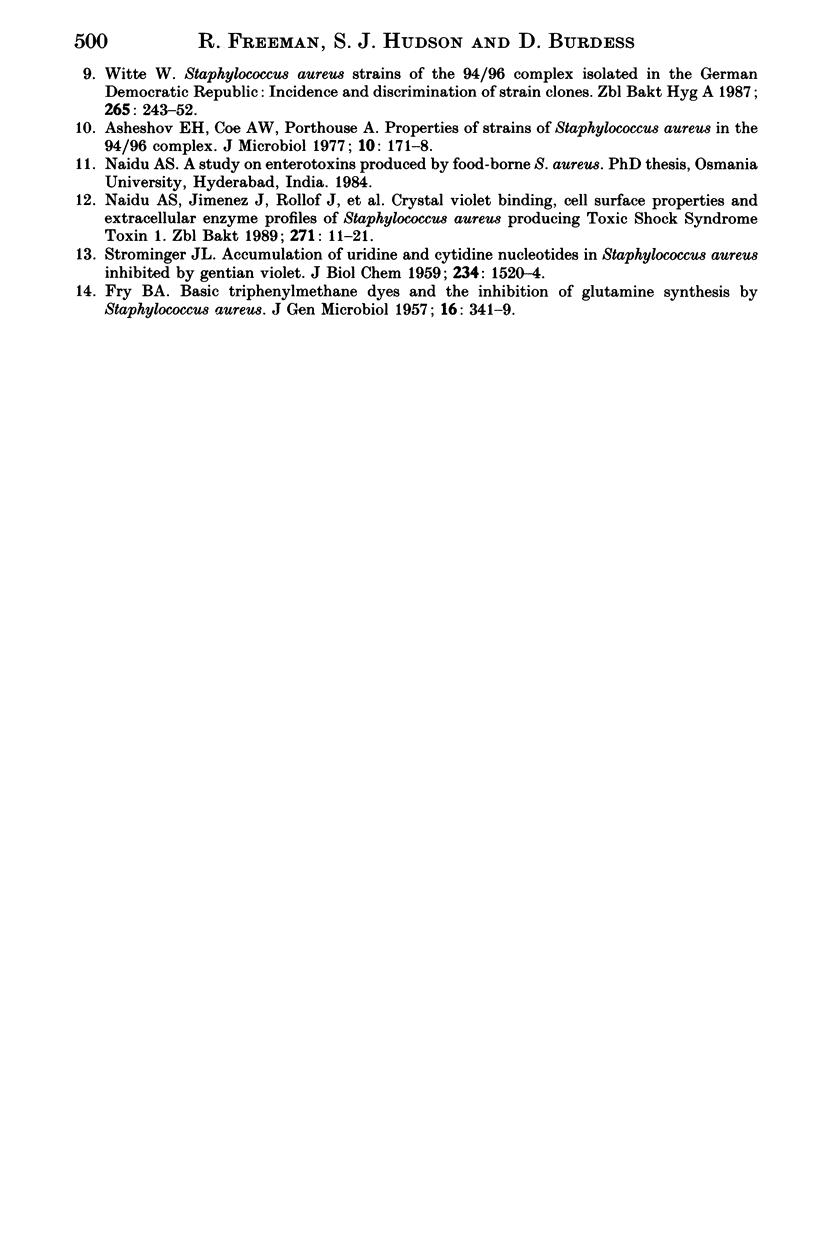
Selected References
These references are in PubMed. This may not be the complete list of references from this article.
- Asheshov E. H., Coe A. W., Porthouse A. Properties of strains of Staphylococcus aureus in the 94, 96 complex. J Med Microbiol. 1977 May;10(2):171–178. doi: 10.1099/00222615-10-2-171. [DOI] [PubMed] [Google Scholar]
- FRY B. A. Basic triphenylmethane dyes and the inhibition of glutamine synthesis by Staphylococcus aureus. J Gen Microbiol. 1957 Apr;16(2):341–349. doi: 10.1099/00221287-16-2-341. [DOI] [PubMed] [Google Scholar]
- Naidu A. S., Jimenez J., Rollof J., Aleljung P., Nilsson-Ehle P., Larsson L., Hedström S. A. Crystal violet binding, cell surface properties and extracellular enzyme profiles of Staphylococcus aureus producing toxic shock syndrome toxin-1. Zentralbl Bakteriol. 1989 May;271(1):11–21. doi: 10.1016/s0934-8840(89)80048-9. [DOI] [PubMed] [Google Scholar]
- Naidu A. S., Rathna K., Nirmala P., Devi D. Y., Rajyalakshmi K. Outbreak of non-menstrual fatal staphylococcal toxic shock syndrome in India. Lancet. 1986 Dec 20;2(8521-22):1454–1455. doi: 10.1016/s0140-6736(86)92757-1. [DOI] [PubMed] [Google Scholar]
- Rao P. N., Naidu A. S., Rao P. R., Rajyalakshmi K. Prevalence of staphylococcal zoonosis in pyogenic skin infections. Zentralbl Bakteriol Mikrobiol Hyg A. 1987 Jun;265(1-2):218–226. doi: 10.1016/s0176-6724(87)80169-4. [DOI] [PubMed] [Google Scholar]
- STROMINGER J. L. Accumulation of uridine and cytidine nucleotides in Staphylococcus aureus inhibited by gentian violet. J Biol Chem. 1959 Jun;234(6):1520–1524. [PubMed] [Google Scholar]
- Witte W. Staphylococcus aureus strains of the 94/96 complex isolated in the German Democratic Republic: incidence and discrimination of strain clones. Zentralbl Bakteriol Mikrobiol Hyg A. 1987 Jun;265(1-2):243–252. doi: 10.1016/s0176-6724(87)80172-4. [DOI] [PubMed] [Google Scholar]
- Zierdt C. H., Robertson E. A., Williams R. L., MacLowry J. D. Computer analysis of Staphylococcus aureus phage typing data from 1957 to 1975, citing epidemiological trends and natural evolution within the phage typing system. Appl Environ Microbiol. 1980 Mar;39(3):623–629. doi: 10.1128/aem.39.3.623-629.1980. [DOI] [PMC free article] [PubMed] [Google Scholar]


